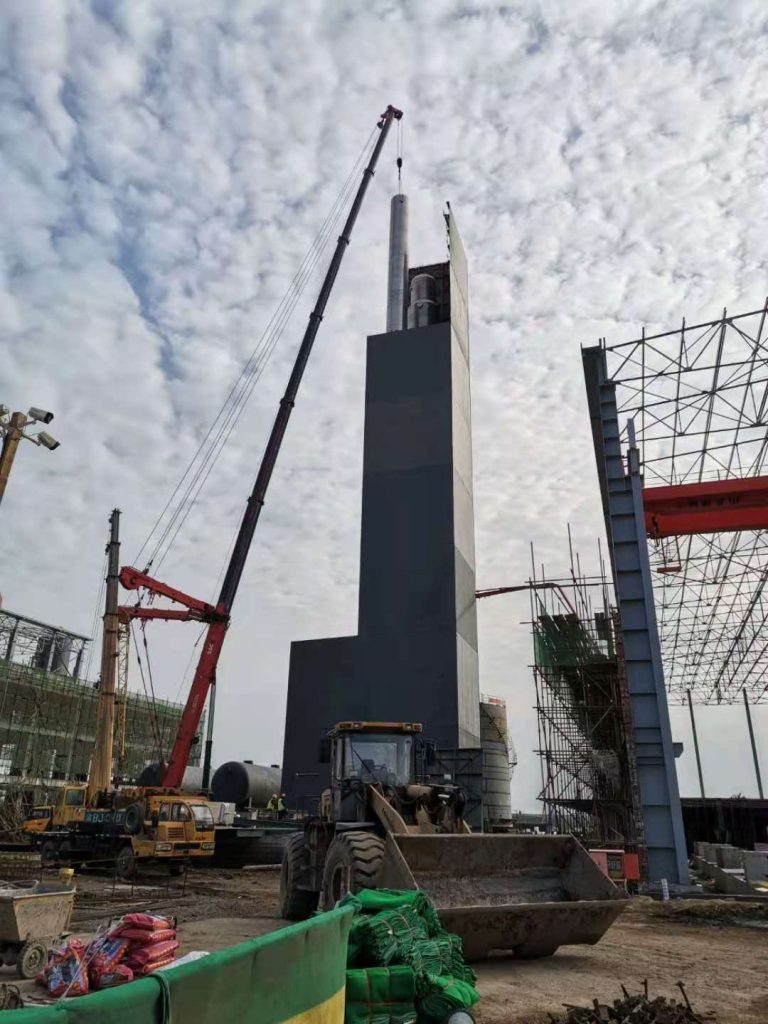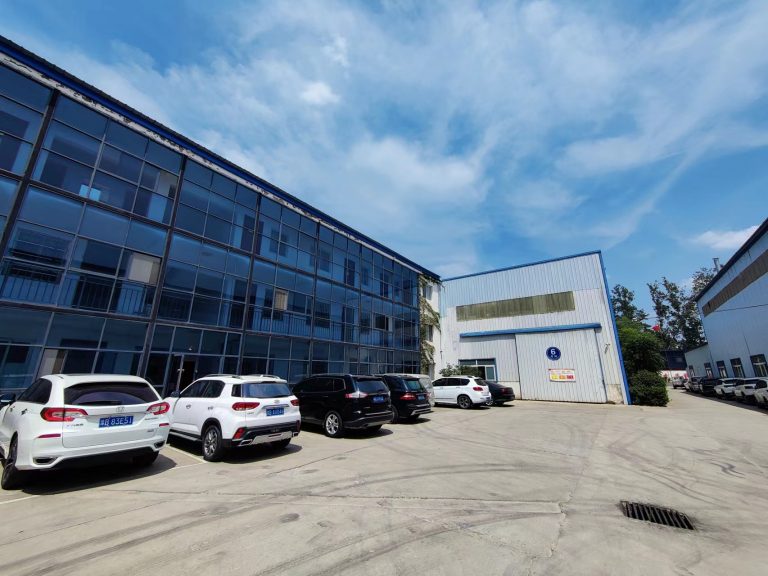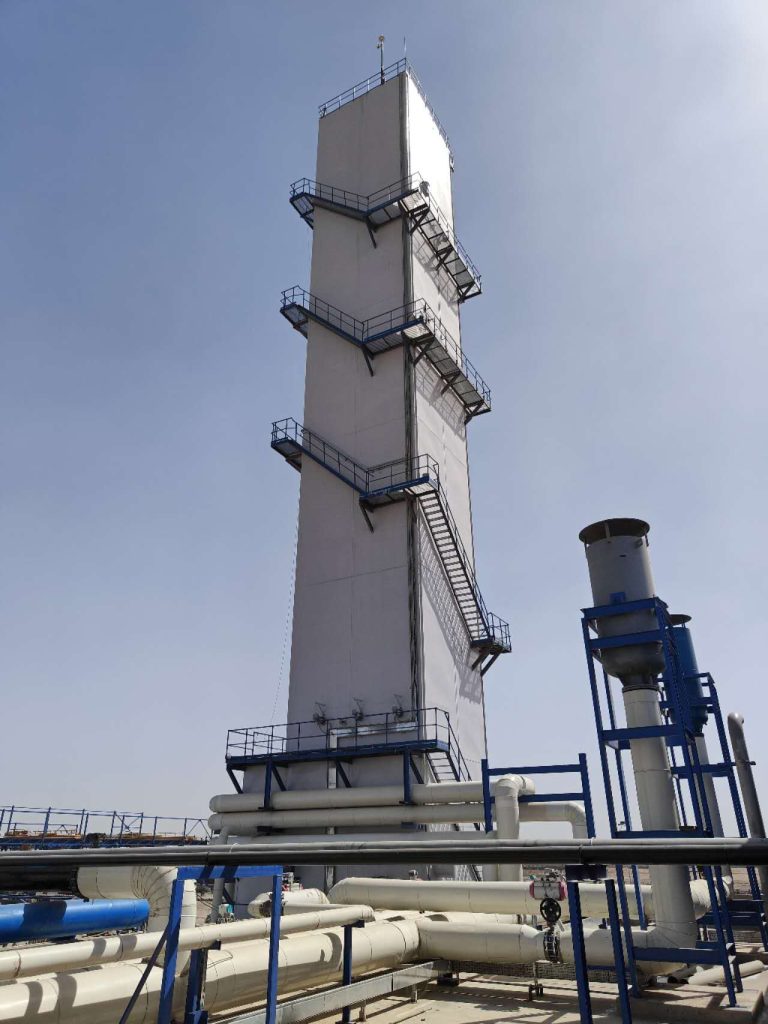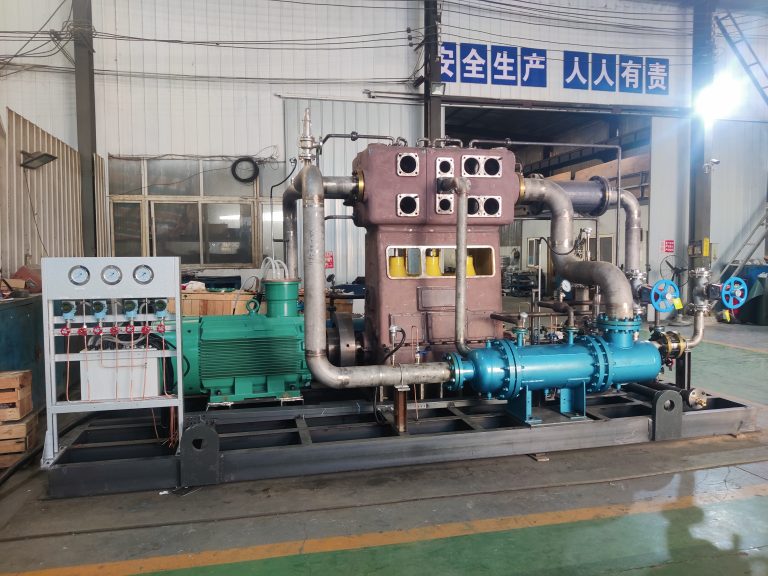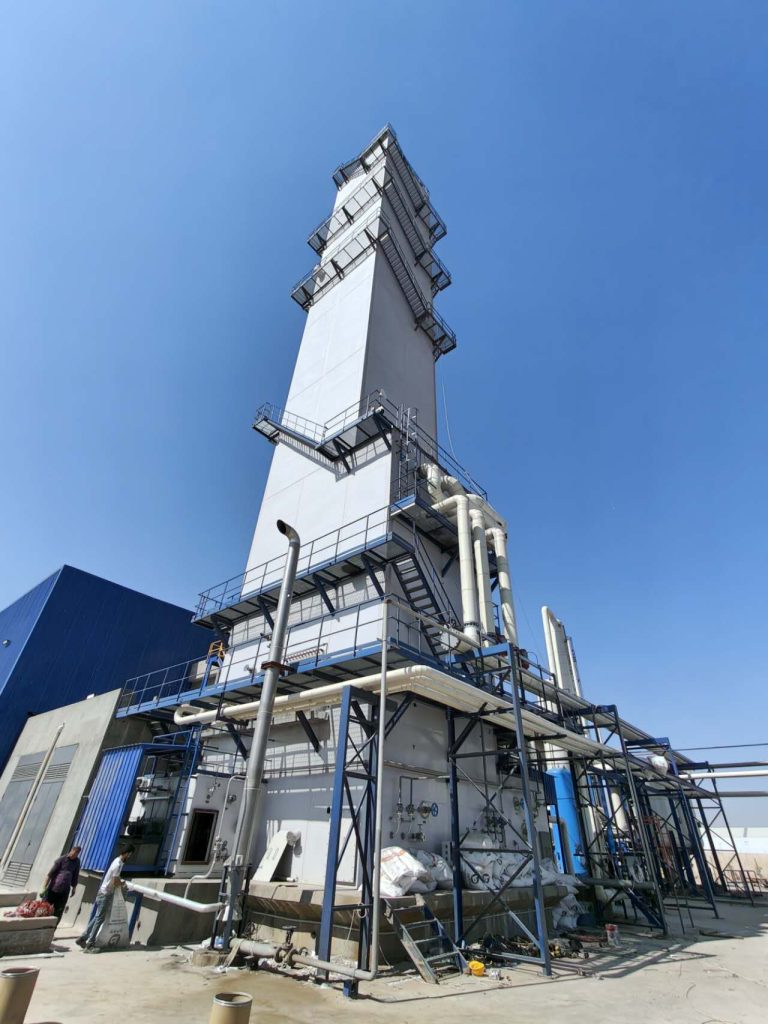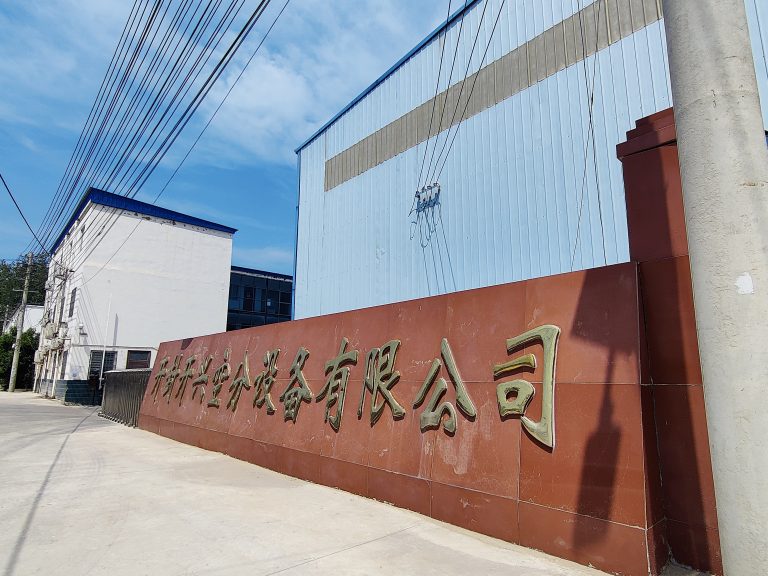The technology of using the different boiling points and relative volatility of components to achieve the separation of different substances has had a preliminary development in the handicraft era, which is the so-called distillation condensation separation technology. In fact, the so-called distillation technology is the special case that there is no distillation section in the rectification technology, only the distillation section and the theoretical number of plates is 1, and condensation is no distillation section in the rectification technology. Only the distillation section and the number of theoretical plates is 1. The most important application case is to make high-alcohol liquor from low-alcohol fermented wine, and heat low-concentration fermented wine with fire or steam. Both water and alcohol in fermented wine will evaporate into the gas phase, but alcohol will evaporate into the gas phase more than water due to its low boiling point and higher volatility. Then use cooling water or natural air to cool the mixed steam of alcohol and water will be higher than the liquor alcohol concentration, of course, with the progress of distillation, the alcohol concentration of fermented wine decreases, and the alcohol concentration of distilled wine condensed by the gas phase also decreases accordingly, so the distilled wine has the first way of wine, two ways of wine. Whether it is the first or two Xiao Xiao wine is a mixture of water and alcohol, but the alcohol concentration is different, in order to get a higher concentration of liquor or even pure alcohol, it is necessary to repeat distillation and condensation. When the cryogeny-air separation textbook talks about how to produce oxygen, it also makes a similar deduction, that is, the use of liquid-air repeated distillation to obtain pure oxygen, but this process is actually impossible to happen, because the air separation distillation is a distillation process with a boiling point below the ambient temperature, and the cryogeny-air separation textbook describes only a thought experiment. S” y. A-i “J(s0z) After the Industrial Revolution, the ancient distillation technology had A major improvement and development into distillation technology, although the same as distillation condensation still uses fire and steam heating, cooling water cooling condensate vapor phase products, but the addition of filler and tray to strengthen the gas-liquid contact, At the same time, part of the gas phase condensate is used as the reflux liquid (and part is used as the product extraction), so that a rectification section is added on top of the distillation (distillation), so that the complete separation of different components at boiling points can be achieved. Of course, for some reason, sometimes the distillation process does not need to achieve complete separation of different components, but a complete distillation process must have both a rectification section and a stripping section. The two-tower process with only a distillation section but no stripping section is not a distillation column in a strict sense, but a condensation column. It’s actually a big condenser. So far, the air separation tower is sometimes still called the distillation tower (oxygen nitrogen rectification tower), which is a reflection of the transition period from distillation to rectification when the air separation process appears. ‘g. f, M G1 R6 .x6W4 H6r standard conventional distillation process includes the following parts, one is the pressure pumping of the distillation raw material, the second is the heat exchange of the distillation raw material and the distillation product, the third is the distillation tower, the distillation tower is equipped with packing and tray to strengthen the gas-liquid contact, and the distillation tower is equipped with a steam reboiler at the bottom. The high-boiling liquid component is vaporized by steam heating as reflux rising gas to form distillation. A cooling vessel is set at the top of the distillation column to cool the low-boiling gas phase component in the distillation column and liquefy it. Part of the component is extracted as product and part of it is injected back into the distillation column as reflux liquid to form distillation. The rectification section is from above the inlet of the rectification material to the top of the rectification column, and from below the inlet of the distillation material
to the bottom of the rectification column is the distillation section of the rectification column. It is a strange thing that the two tower process is regarded as a double effect distillation process in the textbook of cryosphere air separation, but there is no language to explain the double effect distillation process. Maybe the editors think this is common sense, but of course it’s not! Conventional distillation does have the so-called single-effect distillation, double-effect distillation and multi-effect distillation, of which single-effect distillation is the standard conventional distillation has been introduced in detail before it is no longer repeated, multi-effect distillation is generally very rare, it is not introduced for the time being, we focus on discussing what is double-effect distillation. Y(A% T# u& A.@9j6k ‘j) We first draw a standard image of double-effect distillation. After pressurizing the distillation raw material, heat exchange with the high-low boiling point distillation product drawn from the top of the bottom of the low-pressure distillation column is carried into the middle of the high-pressure distillation column, and the steam reboiler is set at the bottom of the high-pressure distillation column. The top of the high pressure distillation column and the bottom of the low pressure distillation column are connected through a heat exchanger (condensing evaporator, also known as the main condenser), and the mixed liquid with high and low boiling point obtained at the bottom of the high pressure distillation column is decompressed into the middle of the low pressure distillation column as the reflux liquid of the low pressure distillation column. The pure low-boiling component gas phase at the top of the high-pressure rectification column is heated by liquid phase with the pure high-boiling component at the bottom of the low-pressure rectification column. The low-boiling component gas phase at the top of the high-pressure rectification column is liquefied and condensed, part of which is used as the reflux liquid of the high-pressure rectification column, and part of which is added from the top of the low-pressure rectification column after decompression as the reflux liquid of the low-pressure rectification column. The cooling water condenser is arranged at the top of the low pressure rectification column to condense the low boiling point gas phase component at the top of the low pressure rectification column as the low boiling point component product! Part of the liquid high boiling point component at the bottom of the low pressure rectification column is extracted as the product, and part of it is vaporized as the reflux rising gas to form distillation. This is a standard double-effect distillation process. Of course, there can be changes, but everything stays the same! Now analyze the characteristics of the double-effect distillation process, one is that two distillation columns with different pressures jointly realize the distillation separation of binary system. The second is that the steam energy is used twice, which is actually the original meaning of the double-effect distillation process! Of course, dual-effect distillation process can achieve complete separation of binary system, but single-effect distillation and multi-effect distillation can also achieve complete separation of binary system, which is self-evident, and the cryogenic air separation textbook has demonstrated that single-stage distillation tower can not actually complete distillation separation of oxygen and nitrogen binary system. Only the two-tower process (the so-called double-effect distillation) can realize the separation of oxygen and nitrogen binary system. I don’t know how to say this. So is the double tower process a double effect distillation process? They are very similar, but they are fundamentally different! When we talk about rectification, we always talk about the use of fire and steam heating and cooling water cooling condensation, although this situation accounts for more than 99% of the rectification cases, but does not rule out other heat sources or cold sources can also be used for rectification. This leaves open the possibility of significant improvements in distillation. In fact, cryogenic air separation distillation can not be heated by fire and steam, nor can it be cooled by cooling water! In fact, in the conventional distillation, in order to save the consumption of steam cooling water, there is a double-effect distillation and multi-effect distillation technology, although it is still necessary to consume steam cooling water, but it has used the condensation heat of high pressure low boiling point gas components as a heat source instead of steam for heating, low pressure high boiling point liquid or low pressure high boiling point mixed liquid evaporation gasification instead of cooling water for cooling. Thus, the steam consumption in the rectification process is greatly reduced. Double-effect distillation and multi-effect distillation are an intermediate transition technology from conventional distillation to single-heat pump and multi-heat pump distillation and open heat pump distillation (self-heating distillation process). The characteristics of double-effect distillation are as follows: the number of rising gas in the rectification section of a low-pressure rectification column is equal to the number of low-boiling component products (this is different from standard conventional rectification, the number of rising gas in the rectification section of standard conventional distillation is equal to the number of low-boiling component products plus the number of reflux liquid), Second, the high boiling point component content in the gas phase corresponding to the entrance of the mixed liquid of the high boiling point component in the low pressure rectification column is not the equilibrium composition of the high boiling point component liquid (this is different from the standard conventional rectification, the high boiling point component content in the corresponding gas phase of the raw material liquid entrance of the standard conventional rectification is in equilibrium with the raw material liquid). In a word, double-effect distillation has a very distinct particularity.
